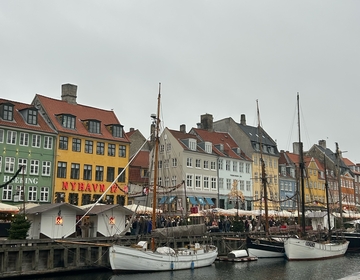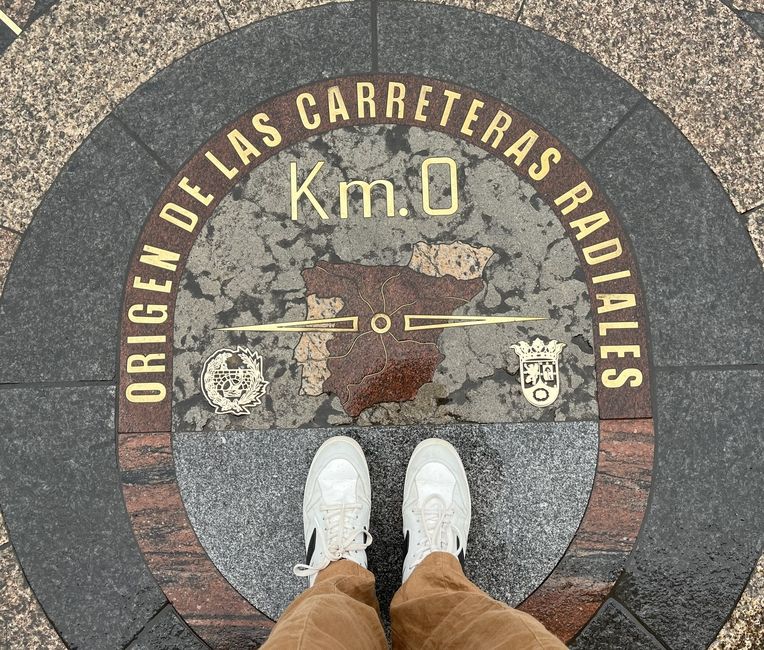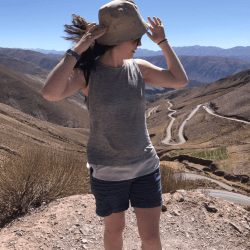Getting Started in Spain
Moving to another country can give you so much to think about that it’s hard to know where to begin. Nevertheless, you move to Spain one step at a time, just like you eat an elephant one bite at a time. Figuratively, of course.
Here are some of the first pasos for starting your life abroad.
1. Get a Spanish phone number
This one comes in at #1 because it helps you take care of other items on the list.
For example, I tried every which way to get the CDNS form to accept my US phone number (I had an international day pass from AT&T, after all), but it just would not work. If I remember correctly, it didn’t work for a groupmate who had a Hungarian phone number, either.
Thankfully, it’s not hard to get a Spanish number. Orange, Vodafone, Movistar, and Yoigo are a few of the carriers here in Spain, and they each have various services. For example, I have Orange’s Go Walk plan, which is 15 euro a month for calling and 25 GB of data.
CUIDADO: When you go into the phone carrier’s store to get your sim card, don’t forget your passport! I would have had a Spanish phone number a day earlier had I brought mine with me to the store.
2. Make your CDNS appointment
The CDNS is the Certificado de Delitos de Naturaleza Sexual—your Spanish sex-crimes background check. You can only get it once you’re in Spain, as they’re making sure you haven’t committed any sexual crimes since arriving in-country.
This ranks in the #2 spot because it can be tricky to find a timeslot. You might click on a time to reserve that appointment, only for the website to tell you that there wasn’t actually anything available. Just keep clicking; an open slot will turn up eventually.
Another reason to get this done early is because while you can start as an auxiliar without having the CDNS in hand (you just need proof that you have an appointment scheduled), it’s a bit of a pain. Until you’ve passed the security check, the school needs to make sure you’re always supervised.
For the four days between when I started as an aux and when I had my CDNS appointment, teachers had to walk me from class to class. It was cumbersome for all involved, although it did help me not get lost during my first week.
The good news, though, is that for Americans, they print the CDNS off while you’re there at your appointment. I spent more time waiting for my turn to be called than I did getting my background checked.
3. Set up a bank account
Good news: This isn’t hard at all! In the CIEE pre-departure orientation, they give you information about setting up a non-resident account with Banco Santander. This includes a form that you can fill out and send to Santander before you get to Spain.
Santander will then contact you to set up an appointment to finish opening your account. You’ll need your passport and some euros for the initial deposit (it was 30 when I did it). You’re able to use your account and a digital debit card the same day that everything gets finalized, and the physical debit card comes in about a week later.
4. Apply for your abono transporte card
This is something you can do before arriving in Spain. In the pre-departure orientation course, CIEE will give you instructions for filling out the application at this link. That's how you apply for a personal transportation card—one that will have your name and your picture on it.
Another thing you can do right now is start figuring out the network of public transportation in Madrid. It's confusing at first, but less so if you're younger than 26. If you are, then you get the abono jóven. This is a flat rate (typically 20 euro per month) that gives you access to all the metro lines, inter-city buses, commuter trains and intra-city buses within the community of Madrid.
5. Find an apartment
My two suggestions for this are: (1) be patient, and (2) use the Idealista website.
It’s a good idea to hit the ground running on the apartment search, but only once you’re in Spain. In the three days before you arrive, you can start contacting landlords to arrange tours, but that’s as far as I’d go. You’ll hear this from everyone: don’t sign a lease if the apartment hasn’t been seen in person by you, or by someone you trust.
You can hit the ground running, but be patient, too. It can take anywhere from four days to four weeks to find an apartment. It tends to take longer to find a place with two or three available rooms than it does to find just one. Living with a friend, or someone you met at orientation, can be great and it can prolong the housing search. Just be aware.
I hope this post has helped you break down the huge moving-to-another-country process into more manageable chunks. One step at a time, friends.
Hasta pronto, amigos.
Related Posts

Who Runs the World? Pharaohs.
Running the Pyramids Half Marathon in Cairo, Egypt Egypt and a half marathon? Let’s run it back—literally. I had the opportunity to travel to Cairo, Egypt, to run the annual... keep reading

Copenhagen Cosplays the North Pole
A Winter Weekend Guide If you’re searching for the perfect winter weekend getaway while studying abroad, Copenhagen deserves a spot at the top of your list. While the city is... keep reading

Let’s Moroccan Roll
A 4-Day Morocco Getaway from Madrid Morocco has become an increasingly popular destination for students studying and working abroad, and after spending four days there, it’s easy to see why... keep reading

